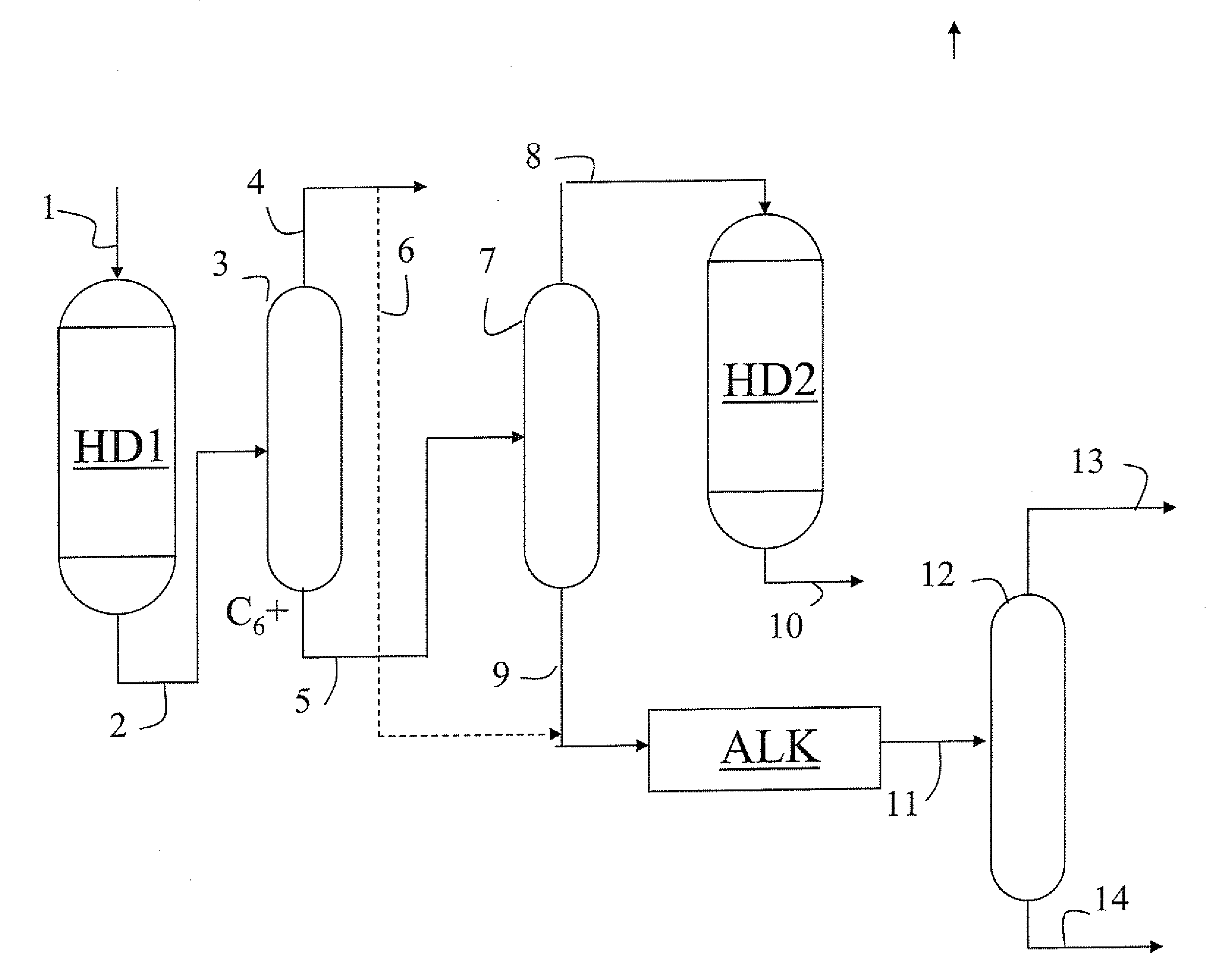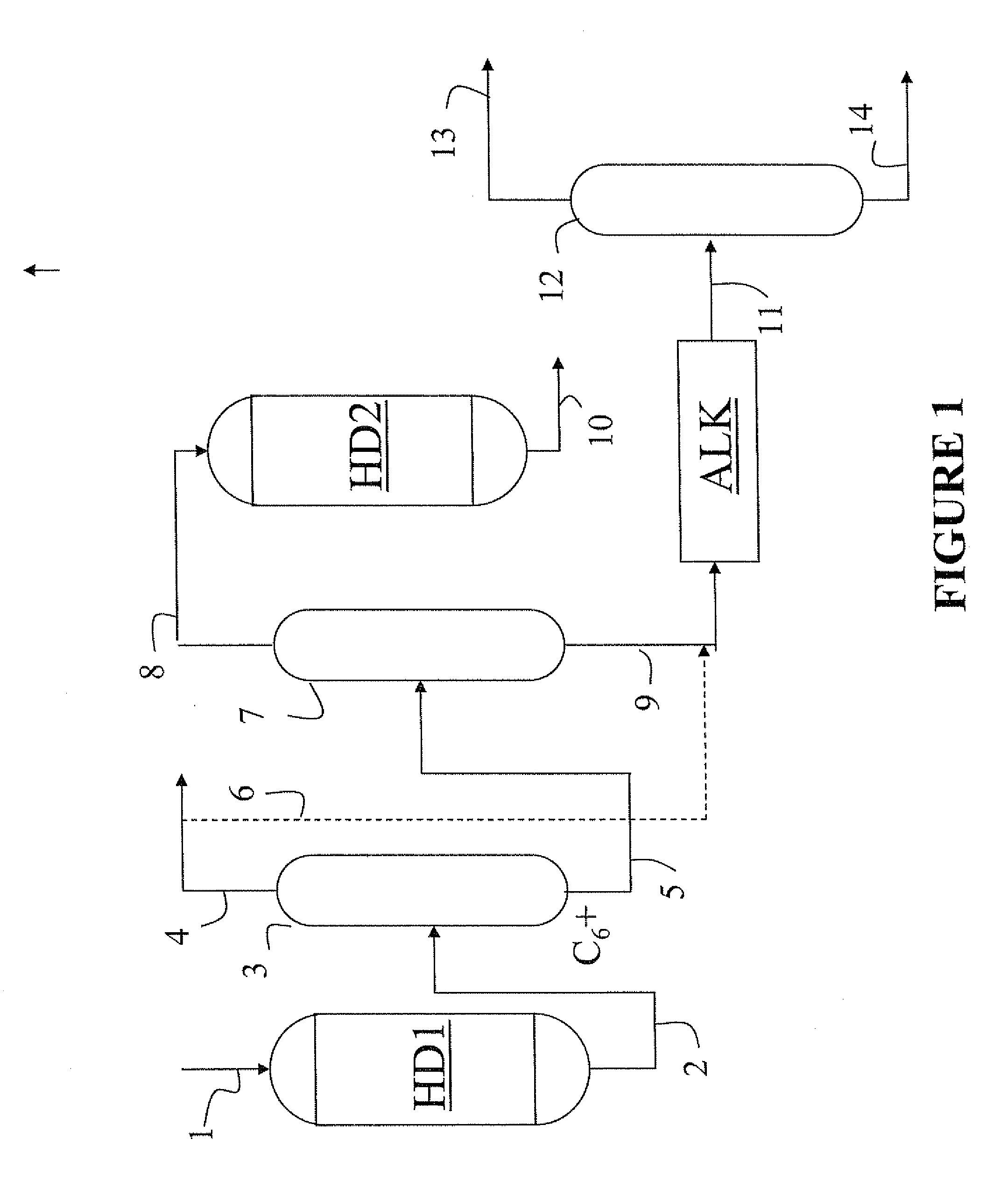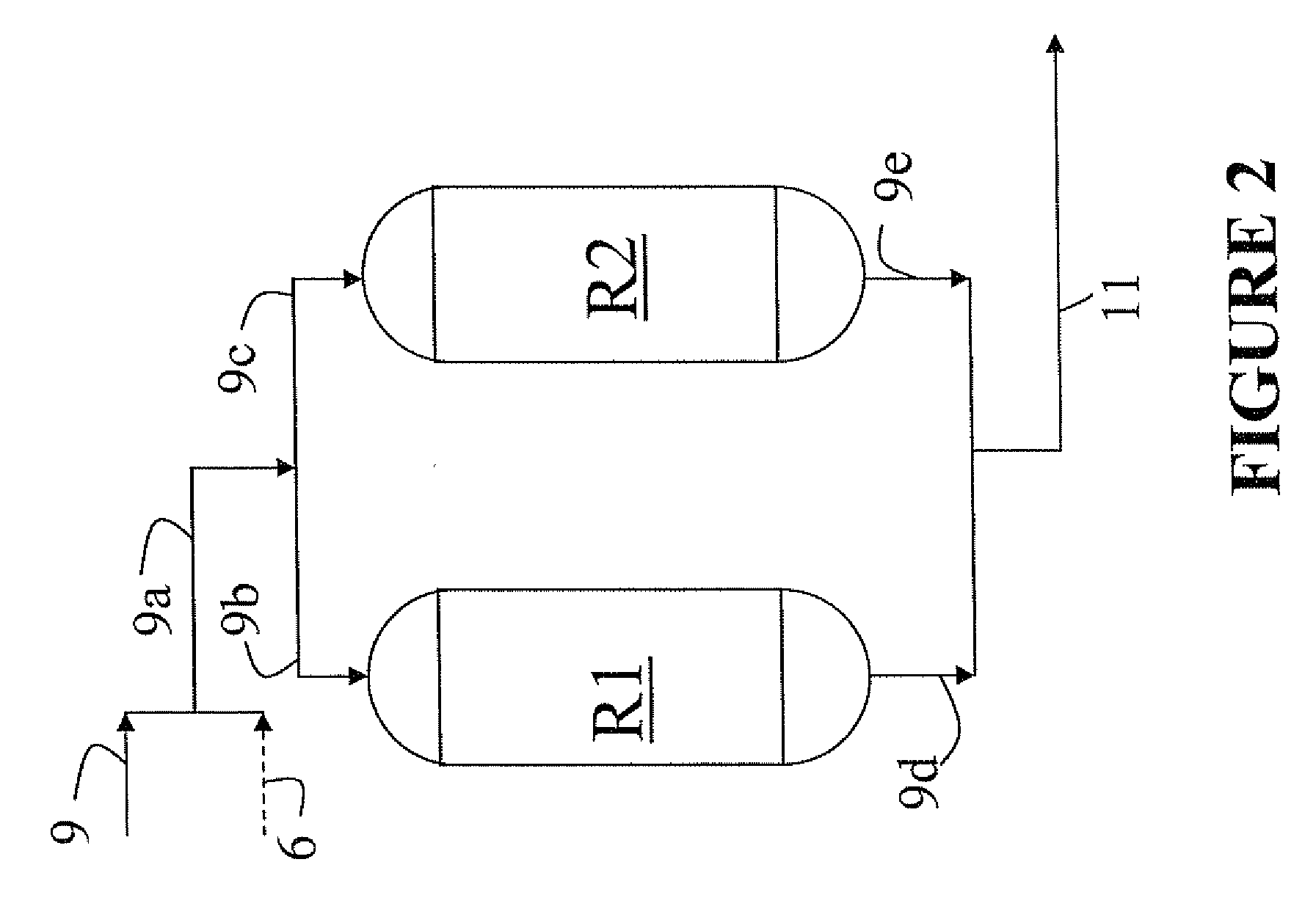Method for desulfurizing hydrocarbon fractions from steam cracking effluents
a technology of hydrocarbon fractions and effluents, which is applied in the direction of hydrocarbon oil treatment products, metal/metal-oxide/metal-hydroxide catalysts, physical/chemical process catalysts, etc., can solve the problems of significant additional investment, inability to use without additional treatment, and incompatible sulfur content with the evolution of standards, etc., to limit the heat release, limit the temperature gradient in the reactor, and avoid the effect of reaching
- Summary
- Abstract
- Description
- Claims
- Application Information
AI Technical Summary
Benefits of technology
Problems solved by technology
Method used
Image
Examples
examples
[0073]The following example describes in a non limitative way catalysts and operating conditions that can be used in the method according to the invention.
[0074]Naphtha steam cracking effluents are fractionated in an effluent treating plant, comprising primary distillation, so as to produce notably a pyrolysis gasoline cut α, comprising essentially C5 and heavier hydrocarbons up to an ASTM end point of 210° C.
[0075]This pyrolysis gasoline cut α has the following characteristics:[0076]Sulfur content: 200 ppm weight[0077]Composition of the pyrolysis gasoline cut α (wt. %)
C3C4C5C6C7C8C9C10C11C12+Totaln-paraffins0.00.13.61.30.20.00.00.00.00.05.2i-paraffins0.02.71.40.30.40.10.00.00.04.9mono-olefins0.20.65.31.70.71.00.40.31.00.912.1diolefins0.01.110.33.93.41.80.120.8naphthenes0.51.30.50.10.00.00.00.02.5aromatics26.611.84.22.01.90.70.147.3alkenyl3.53.10.50.00.07.1aromaticsTotal0.21.822.436.413.59.25.66.23.61.1100.0
[0078]This pyrolysis gasoline cut is treated according to the process layout...
PUM
| Property | Measurement | Unit |
|---|---|---|
| boiling point temperature | aaaaa | aaaaa |
| boiling point temperature | aaaaa | aaaaa |
| pressure | aaaaa | aaaaa |
Abstract
Description
Claims
Application Information
 Login to View More
Login to View More - R&D
- Intellectual Property
- Life Sciences
- Materials
- Tech Scout
- Unparalleled Data Quality
- Higher Quality Content
- 60% Fewer Hallucinations
Browse by: Latest US Patents, China's latest patents, Technical Efficacy Thesaurus, Application Domain, Technology Topic, Popular Technical Reports.
© 2025 PatSnap. All rights reserved.Legal|Privacy policy|Modern Slavery Act Transparency Statement|Sitemap|About US| Contact US: help@patsnap.com



